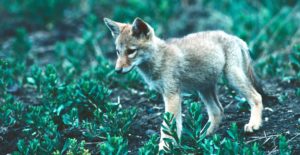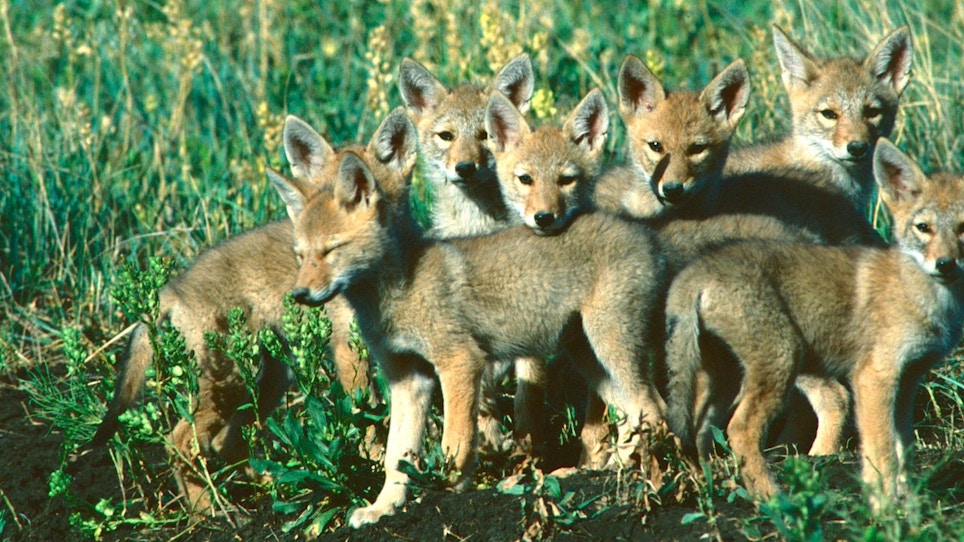Spring is when coyotes have pups, with their voracious appetites prompting more aggressive hunting by adults to feed them and thus giving hunters more opportunities. (Photo: Mark Kayser)
Some coyote hunters never unload their firearm magazines, but for many the end of fur season means a slowdown to coyote pursuits. Even if you aren’t actively in pursuit, coyotes still have an agenda and right now it’s maintaining a domicile. Pups will be born soon and the busy season starts for a pair of coyotes raising a litter of pups.
Most coyotes mate in February and March with a few beginning in January. Gestation for a female coyote is approximately 60 days. In the period beforehand the pair establishes a territory and either digs a new den, or cleans out a den from the past. This will serve as home base, but every good mom has a backup home as well.
Whether coyotes feel pressured by other predators or human disturbances, they will move a batch of pups to another backup den. Red fox are notorious for moving from den to den throughout the early weeks after birthing. They may also move to another den due to flea infestations or simply too much garbage from droppings, and animal leftovers from eating littering the site.
Where coyotes den and what they utilize for cover varies as much as a coyote diet depending on the region of the country. Soil type, rock sedimentation, forestation, human habitat manipulation and a host of other factors force coyotes to be creative while den shopping. Oftentimes they’ll use the pre-existing holes of other animals such as badgers, woodchuck, fox or other burrowing species.

Coyote pups are inquisitive and will begin investigating around the den, with the female never too far away. (Photo: Mark Kayser)
They’ve been known to expand small caverns in cliffs and even use hollowed out logs. An abandoned root cellar that has partially caved in could provide cover as long as human activity is not close by. Coyotes are creative so don’t be surprised at where you find a den. The entrance hole will barely be big enough for an adult to fit into and most dens have an exit, but it’s not a prerequisite to the real estate deed.
Throughout April most female coyotes will have a litter of anywhere from four to seven or more pups. Approximately 10 days later the pups will open their eyes and then the real parenting begins. Pups begin crawling all over and before long the rambunctiousness can be overly irritating.
Approximately three weeks into the life of the pups they’ll start exploring outdoors as parents and babysitters rotate to bring in food. Most early food gathering is done by the male as the female provides milk to the pups. They are weaned between six and nine weeks. Food is dragged, carried or regurgitated to the pups, and the female throughout the entire denning process.
After weaning, the abandonment of a home base begins. Parents begin teaching pups hunting tactics that mesh with instinct and by late in the summer you’ll see pups already boldly pioneering to new territory. Some may stick with the parents while others may form packs with siblings. Nevertheless, the new crop of pups is about ready for your management once again.






